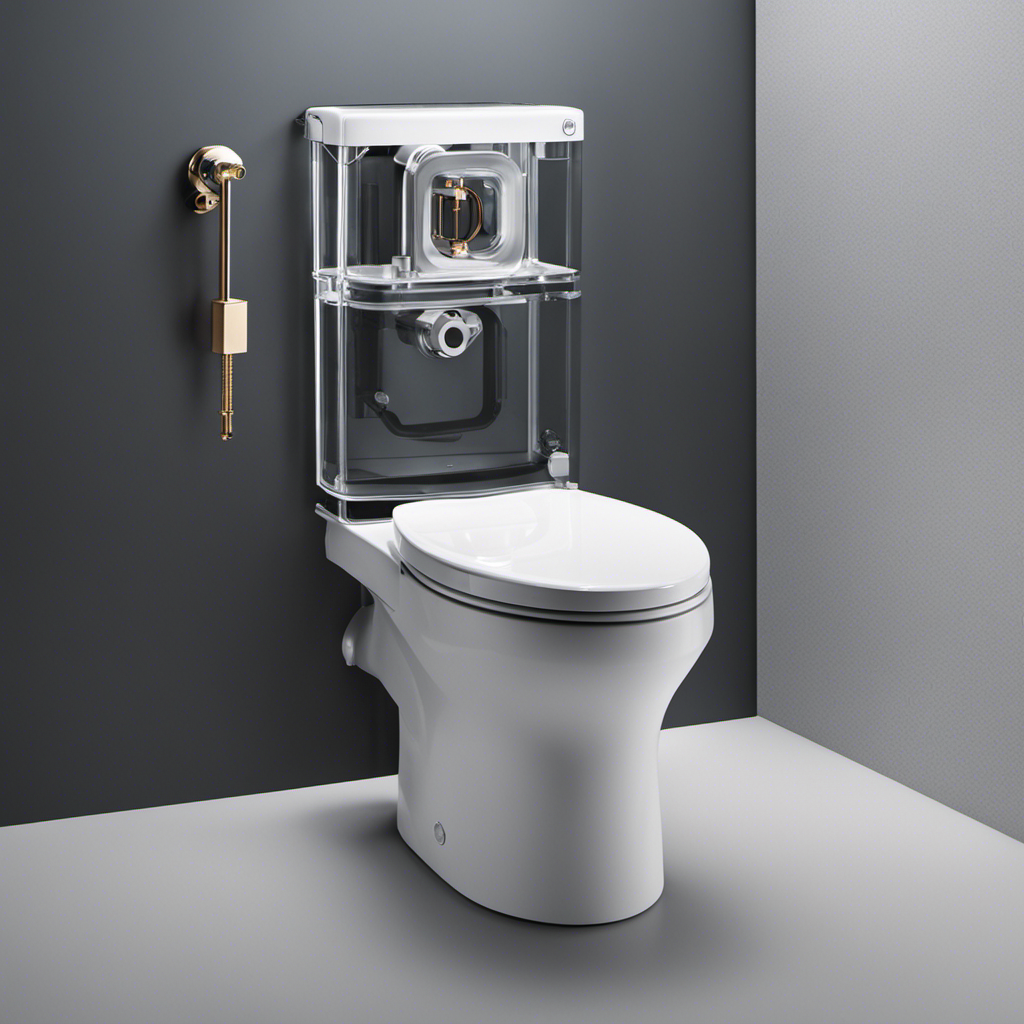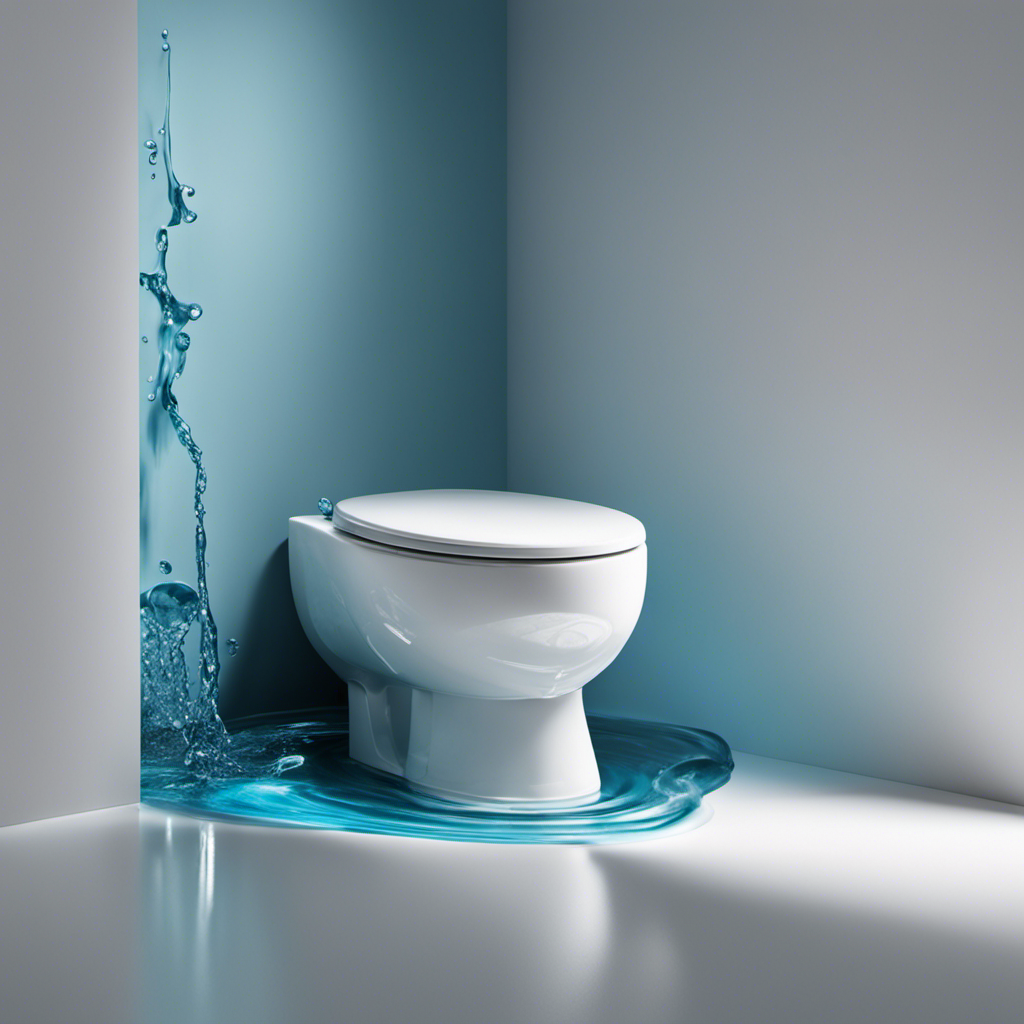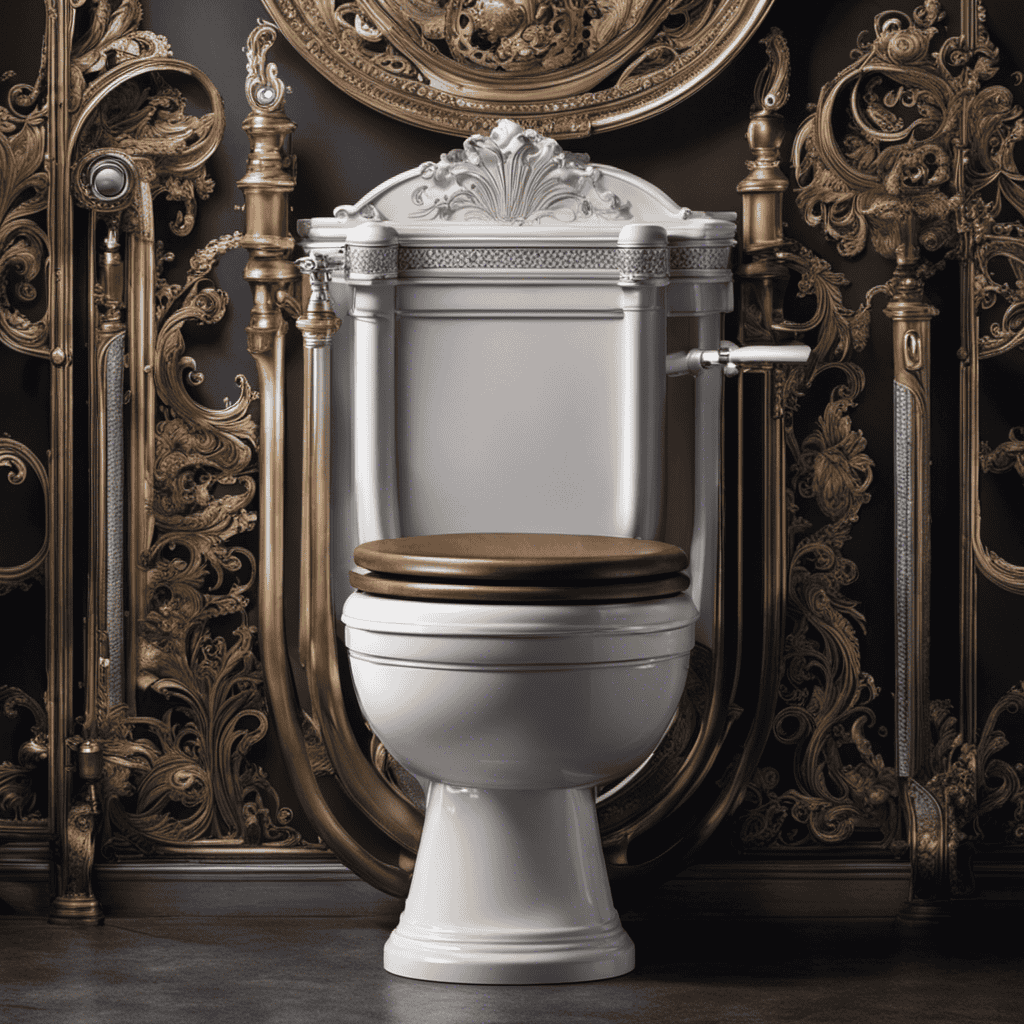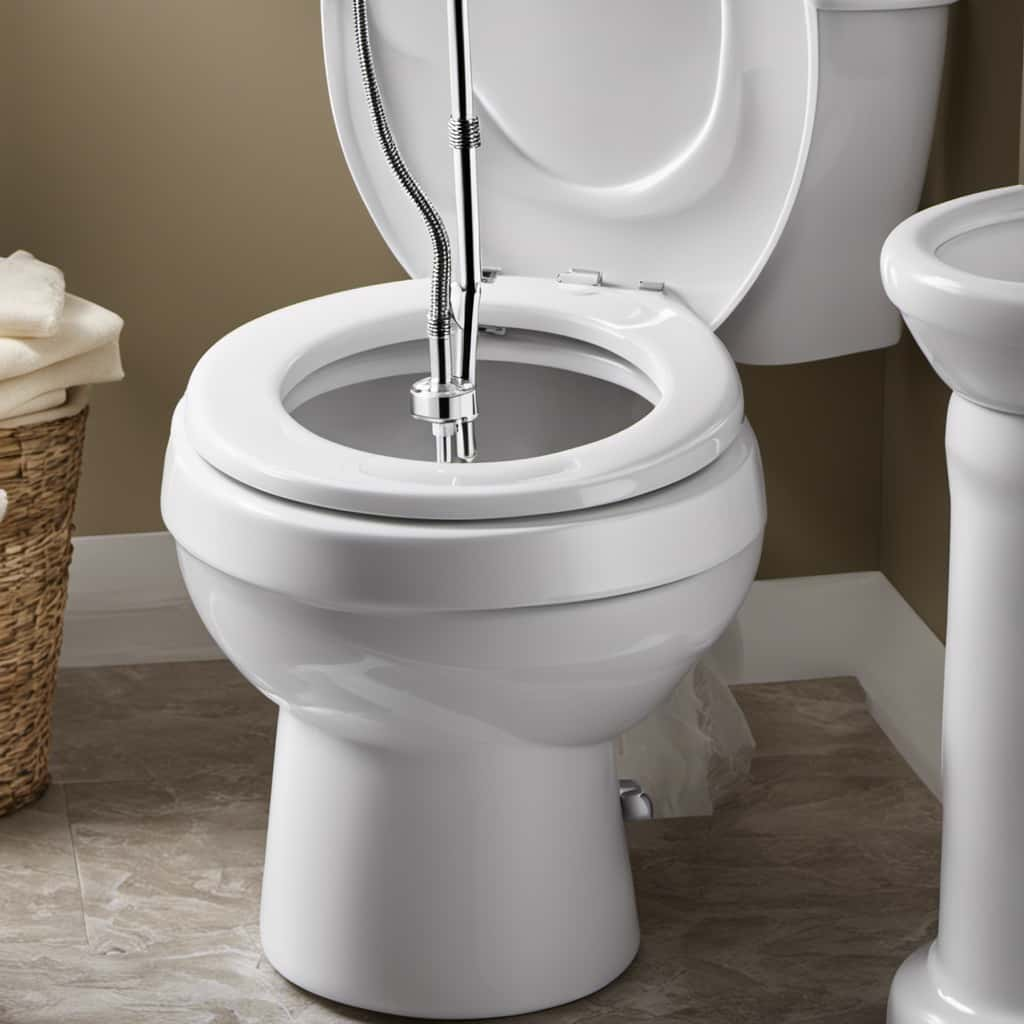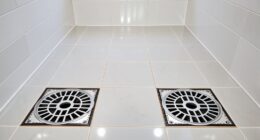Do you ever wonder why your toilet randomly runs for a few seconds? Well, the truth is, there are a few common causes behind this frustrating issue.
A faulty flapper valve, problems with the fill valve, and the role of the float ball can all contribute to your toilet’s sporadic running. But don’t worry, we’re here to help you troubleshoot and fix these problems.
In this article, we’ll delve into the technical aspects of toilet mechanics to give you the knowledge you need to solve this pesky issue.
Key Takeaways
- A faulty flapper valve can cause a toilet to randomly run for a few seconds.
- Problems with the fill valve can also lead to random toilet running.
- The float ball plays a role in regulating the water level in the tank and can cause random running if not functioning properly.
- Other potential causes of toilet running include damage or wear to the flapper valve, chain length adjustment, flapper seal inspection, and water level testing.
Common Causes of Random Toilet Running
One of the most common causes of a toilet randomly running for a few seconds is a faulty flapper valve. The flapper valve is responsible for controlling the flow of water from the tank into the bowl when you flush. If it doesn’t seal properly, water can leak into the bowl, causing the toilet to run.
Another potential cause of random toilet running is water pressure issues. If the water pressure is too high, it can cause the fill valve to malfunction, leading to constant refilling of the tank.
Additionally, hard water can have a negative impact on toilet performance. Mineral deposits from hard water can build up in the tank, affecting the operation of the flapper valve and fill valve, resulting in random running.
Regular maintenance and checking these components can help prevent these issues.
How a Faulty Flapper Valve Can Cause Toilet Running
A faulty flapper valve can cause the toilet to intermittently refill, leading to water wastage. The flapper valve is responsible for controlling the flow of water from the tank to the bowl. When it malfunctions, it may not seal properly, allowing water to continuously leak from the tank into the bowl. This constant leak triggers the toilet to refill periodically, as it tries to maintain the water level in the tank.
To fix a faulty flapper valve and stop the toilet from running, follow these steps:
- Turn off the water supply to the toilet by closing the shut-off valve.
- Remove the tank lid and locate the flapper valve.
- Inspect the flapper valve for any signs of damage or wear.
- If necessary, replace the flapper valve with a new one, ensuring a tight seal.
Problems With the Fill Valve and Toilet Running
To fix problems with the fill valve and stop your toilet from running, start by turning off the water supply to the toilet. This will prevent any water from flowing into the tank while you work on the fill valve. Once the water supply is off, you can proceed with the following steps:
-
Remove the tank lid and locate the fill valve. It is usually located on the left side of the tank.
-
Check for any visible signs of damage or wear on the fill valve. If you notice any issues, it may be necessary to replace the fill valve.
-
Adjust the water pressure. Sometimes, high water pressure can cause the fill valve to malfunction and result in a running toilet. Use a pressure regulator to adjust the water pressure to a suitable level.
The Role of the Float Ball in Random Toilet Running
The float ball is responsible for regulating the water level in the toilet tank and can contribute to random running if it is not functioning properly.
The float ball adjustment is a crucial step in troubleshooting the issue of toilet randomly running. If the float ball is set too high, it can cause the water to continuously flow into the overflow tube, resulting in the random running.
To adjust the float ball, locate the screw or clip on the float arm and adjust it to the desired water level.
If the float ball is damaged or worn out, a float ball replacement may be necessary. This can be done by unscrewing the old float ball and installing a new one in its place.
Remember to turn off the water supply before making any adjustments or replacements.
Troubleshooting Other Potential Causes of Toilet Running
If you’ve already adjusted the float ball and the toilet is still running, check the flapper valve for any signs of damage or wear.
The flapper valve is located at the bottom of the toilet tank and is responsible for sealing the tank and preventing water from continuously flowing into the bowl.
Here are three potential causes to consider when troubleshooting a running toilet:
-
Check the chain length: Ensure that the chain connecting the flapper valve to the flush handle is properly adjusted. If the chain is too short, it can prevent the flapper valve from closing completely, causing the toilet to run.
-
Inspect the flapper seal: Over time, the flapper seal can deteriorate or become misaligned, leading to leaks and toilet tank noise. Inspect the flapper seal for any cracks, warping, or debris that may be affecting its ability to create a watertight seal.
-
Test the water level: If the water level in the toilet tank is too high, it can cause water to continuously flow into the overflow tube, resulting in a running toilet. Adjust the water level by adjusting the fill valve or float ball to the recommended level.
Conclusion
So there you have it! Now you know why your toilet randomly runs for a few seconds. It could be due to a faulty flapper valve, problems with the fill valve, or issues with the float ball.
By understanding these common causes, you can troubleshoot and fix the problem yourself, saving both time and money. Did you know that a leaking toilet can waste up to 200 gallons of water per day?
Taking care of these running toilet issues is not only important for your wallet, but also for the environment.
Happy troubleshooting!
